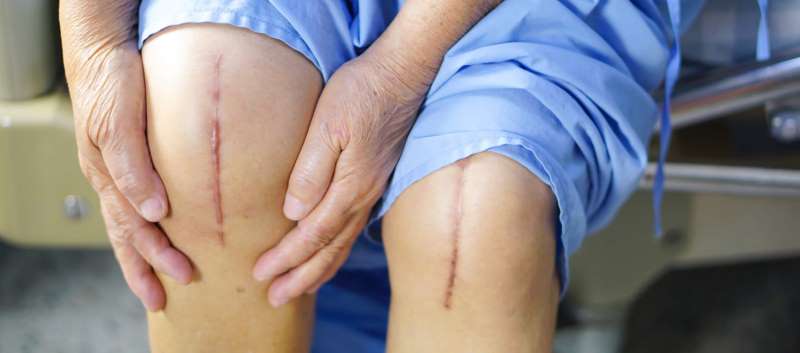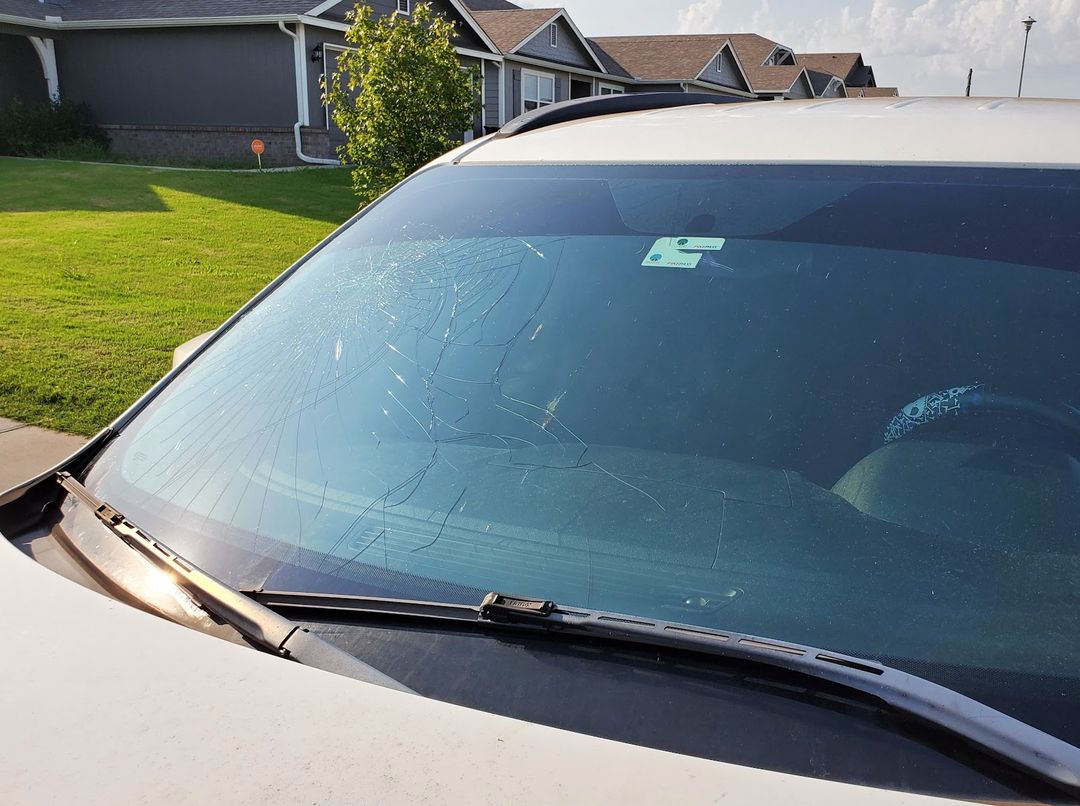Joint replacement is a common orthopedic surgery that uses prostheses to restore function, improve mobility, and relieve pain in damaged joints.
Hundreds of thousands of joint replacements are performed every year around the world. Most commonly, because of traumatic joint injury or painful joint diseases like osteoarthritis and rheumatoid arthritis. According to a survey by the OECD of member nations, the incidence of joint replacement in Germany is among the highest.
Prosthetic Joint Infection (PJI) is a potentially severe complication after joint replacement surgery, affecting up to 2% of patients. Infections can occur anywhere from a few days to up to 2 years following the surgery.
Management of prosthetic joint infection typically requires a multidisciplinary approach between orthopedics and infectious disease teams. Treatment involves prosthetic replacement, long-term antibiotic therapy, surgical revision, and physical therapy. Revision arthroplasty in Germany and other major orthopedic hubs is now safer with advances in surgical techniques.
The stress on the healthcare and socio-economic systems arising from prosthetic joint infection treatment in Germany, the USA, and worldwide is a growing cause for concern. For instance, in the USA, the economic impact of treating prosthetic joint infection was estimated at around $1.62 billion in 2020.
Defining Prosthetic Joint Infection
Also known as a Septic Endoprosthetic Infection, a Prosthetic Joint Infection is a severe complication that can affect the joint prosthesis and surrounding tissues after having a prosthetic joint installed.
Prosthetic joint infection is a significant cause of implant failure among patients who have undergone joint replacement. They affect an estimated 0.8% – 1.9% of knee replacements and 0.3% – 1.7% of hip replacements.
Prosthetic infections result from bacteria growing around the prosthetic joint. The bacterial infection leads to tissue and joint damage, pain, and decreased joint function. A prosthesis is still a foreign body, and its implantation alone is a risk factor for infection.
Endoprosthetic Infections are classified based on the time of occurrence in relation to the prosthesis implantation:
- Early Infection: Occurring within 3 months of joint replacement
- Delayed Infection: Occurring between 2 months and 2 years post joint replacement
- Late Infection: Occurring over 2 years after joint replacement
What Are The Symptoms of Prosthetic Joint Infection?
Depending on your condition, the symptoms of prosthetic joint infection vary in severity and speed of onset. The symptoms affecting the replaced joint can include:
- Ruptured surgical stitch (early)
- A tunneling wound leading to the joint (early)
- Pus drainage (early)
- Joint pain aggravated by movement
- Restricted joint range of motion
- Swelling in the joint
- Redness at the joint
- Fever
- Chills or night sweats
- In severe cases, signs of sepsis (low blood pressure, loss of consciousness, breathing problems can present in severe cases
In severe cases of PJI, you might show signs of sepsis, a life-threatening response to infection. Low blood pressure, loss of consciousness, and trouble breathing are only a few of the symptoms of sepsis you may experience in severe prosthetic infection.
Early infections happen almost immediately after surgery and are more acute and notable. These infections cause obvious pain, signs of inflammation, wound abnormalities, and limited joint movement.
Late occurring prosthetic joint infections are slower with subtle symptoms and often resemble those of non-infected mechanical prosthetic failure that happens with time. Such infections can only be diagnosed through laboratory testing.
Often, prosthetic joint infections result from the spread of infection from another body part (see below), and symptoms of the primary infection may overshadow those of PJI.
What Causes Prosthetic Joint Infection?
Prosthetic joint infections occur because of bacterial infection and subsequent damage to the surrounding tissue. Two routes allow the bacteria to reach the joint and cause infection:
Direct Invasion
Direct invasion of bacteria typically leads to early infections within the first 3 months of joint replacement. Microorganisms can contaminate the prosthesis due to lack of sterility during surgery, resulting in infection. Alternatively, a wound infection can develop because of a lack of proper wound care in the post-operative period. If left untreated, bacterial invasion can extend to your joint by forming a sinus tract (a hollow connection) between the skin inside and outside of your joint.
Hematogenous Spread
Hematogenous spread is usually the mechanism of infection in late occurring prosthetic joint infections over 2 years after surgery. It occurs when a bacterial infection in an unrelated part of your body spreads through your blood and accesses the prosthetic joint. For instance, bacterial spread often occurs after dental surgery, wherein bacteria access your bloodstream and reach your joint. Prosthetic joints strongly attract bacteria, especially in cases of blood invasion.
Various organisms have been identified as common causes of prosthetic joint infections. Staphylococcus aureus is the most commonly isolated organism, causing up to 44% of endoprosthetic infections, followed by the enteric gram-negative bacilli, like E. Coli and Klebsiella, that causes around 25% of PJIs.
How Are Prosthetic Joint Infections Diagnosed?
Diagnosing septic endoprosthetic infections is challenging, especially in slow-progressing, late infection. With advances in imaging technology and diagnostics in prosthetic joint infection treatment in Germany and other major nations across the globe, detecting endoprosthetic infections is now more reliable. Your orthopedic surgeon will determine if you have a prosthetic joint infection by evaluating your symptoms, history of joint replacement, and physical exam.
Once they suspect a prosthetic joint infection, they may request a series of tests for confirmation:
Imaging
One or more imaging tests might be ordered to diagnose and assess the presence or absence of joint damage, the extent of infection, the extent of soft tissue involvement, the overall health of your joint, and more:
- X-ray: X-rays are routinely ordered to get a general overview of your prosthesis and joint.
- Magnetic Resonance Imaging (MRI): MRIs can safely assess titanium or tantalum implants and provide detailed images of your joint and the surrounding tissues.
- Computed Tomography (CT) Scan: A CT scan can provide clear views of your joint and soft tissues.
- Positron Emission Tomography (PET) Scan: PET scans show areas of high metabolic activity, which may show prosthetic joint infection.
- Radionuclide Imaging: Radionuclide imaging uses technetium-99m to detect immune cells inside your joint.
Blood Work Routine blood tests are ordered to look for indicators of inflammation. Acute inflammation suggests PJI. However, these tests generally do not reveal the location of the inflammation.
- C-Reactive Protein (CRP) and Erythrocyte Sedimentation Rate (ESR): CRP and ESR are inflammatory markers that are elevated during infections
- Procalcitonin: Procalcitonin is a marker of infection
- Blood count with differential (CBCD): The CBCD shows an elevated white blood cell count and a high neutrophil percentage in bacterial infection.
If your surgeon suspects that other body systems are also involved, they may order other blood tests.
Aspiration of the Joint
Joint aspiration is probably the most valuable diagnostic test for prosthetic joint infection. Your surgeon will use a fine needle to access your joint and aspirate fluid.
The fluid will be sent to the lab for the following tests to determine the presence or absence of infection:
- Microscopic examination (including gram staining)
- Chemical analysis
- Bacterial culture
Upon microscopic examination, a high white blood cell count and high polymorphonuclear (PMN) cells are strong indicators of prosthetic infection. Analysis of bacterial cultures can help identify the causative organism to determine the treatment.
Treatment Modalities
Treating infected prosthetic joints will vary with each case. The goal of treatment is to remove the infection and restore pain-free movement of the infected joint. For most patients, successful treatment of PJI involves long-term antibiotic therapy and surgical intervention.
Antibiotics
Antibiotic therapy for prosthetic joint infections is a crucial treatment, always indicated regardless of whether surgery will or will not be performed.
Antibiotics for PJI last for at least 2 weeks up to 6 months or more. Although several factors, such as the type of microbe, extent of infection, planned surgery, and patient’s response, will determine the duration of antibiotic therapy.
For non-acute cases with minimal symptoms, your surgeon may delay antibiotic therapy until they identify the causative bacteria through intraoperative specimen collection or preoperative joint fluid aspiration.
Antibiotic therapy is typically administered intravenously. Once the organism is identified, your surgeon can shift it to oral therapy.
Antibiotic therapy without surgery might be preferred for patients who:
- Disapprove of surgery
- Are poorly indicated for surgery
In prosthetic joint infection treatment in Germany and other global centers of repute, antibiotic-only therapy is usually reserved for the above scenarios given a success rate of less than 25%.
Surgery
Most cases of prosthetic joint infection require revision surgery. Several surgical techniques may treat PJI. The choice of surgery will depend on joint health, the classification of infection, and patient preferences, among other factors. In recent times, surgery for prosthetic joint infection treatment in Germany and other top global centers has witnessed significant technological advances that have considerably improved patient outcomes.
Here are the possible techniques:
1. Debridement Without Prosthetic Joint Removal
Debridement is usually limited to patients with early infections occurring within 30 days of the initial surgery and still have a healthy prosthetic joint. Your surgeon might opt to clean the joint without removing the prosthesis. The infective organism must be sensitive to antibiotic therapy before you can undergo debridement.
2. Two-Stage Revision
Two-stage revision is successful in 95% of hip and knee surgeries, making it a common treatment for PJI in the United States. In the first stage of surgery, your surgeon removes the infected joint and prescribes antibiotic therapy for at least 6 weeks. They install a new prosthetic joint during the second stage.
3. One-stage Revision
One-stage revision is a more commonly performed revision arthroplasty in Germany and Europe, with success rates ranging from 70% to 90%. Your surgeon will remove the prosthetic joint and replace it with a new one in one session. Patients will need to receive antibiotic therapy before and after the surgery.
4. Resection arthroplasty
In resection arthroplasty, your surgeon removes the prosthetic joint and fuses the old joint instead of inserting a new one. It’s the preferred technique for patients who do not respond well to multiple PJI therapies and are not suitable for surgery.
5. Amputation
Amputation is the last resort for patients who have failed to respond to all therapy options and still have an active infection. It’s often the more realistic option in bed-ridden patients and those who don’t ambulate.
How Can Prosthetic Joint Infection Be Prevented?
1. Screening for staphylococcus bacteria
While it is a common cause of joint infections, not all centers offer screening prior to surgery. Patients are administered an antibiotic ointment nasally and provided medicated wipes prior to surgery.
2. Quit smoking
Quitting nicotine use before surgery can help reduce the risk of infection since it increases the risk of wound healing problems that may lead to infection.
3. Keep your blood sugar in check
For those with Diabetes, it is vital to ensure adequate control of blood sugar since elevated levels can increase the risk for PJI.
4. Watch your BMI
A Body Mass Index of over 40 amplifies the risk of complications seven fold. Thus, maintaining a BMI under 35 can drastically improve your chances of preventing prosthetic joint infection.
Final Thoughts
Prosthetics alone can take time to get used to and PJIs can make joint replacement a long and frustrating process. However, given the various methods for diagnosis and management, there is a high success rate for the effective treatment of joint prosthesis infections. The advances in surgical sterility techniques employed in prosthetic joint infection treatment in Germany, the USA, and other major global healthcare hubs and the prevention of PJI can significantly impact the number of prosthetic infections.












